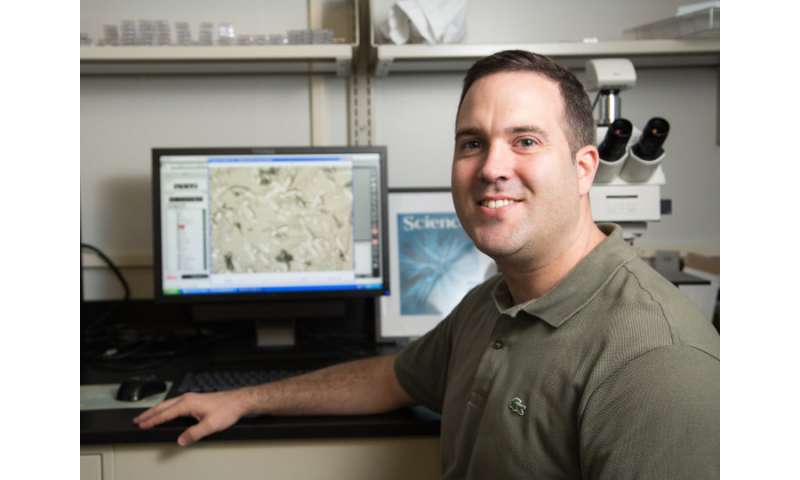DOE study targets safer storage of nuclear waste

About 20 percent of the electricity produced in the United States is generated at nuclear power plants, according to the U.S. Nuclear Regulatory Commission (NRC). This means one out of every five U.S. homes turn on their lights, use refrigerators and make toast—among other things—using energy generated by nuclear power.
Nuclear materials and technology is used in other areas, too, including radioactive isotopes to help diagnose and treat medical conditions and irradiation to help make pest-resistant seed varieties.
Nuclear power reactors don't directly emit greenhouse gases, but they do produce nuclear waste, making it crucial to find ways to safely store and dispose of radioactive waste. An engineer with the University of Houston is leading an $800,000 project funded by the U.S. Department of Energy to address the issue.
"Whenever we deal with nuclear energy, we are always concerned about how we deal properly with the waste that is generated," said Jeffrey Rimer, the Abraham E. Dukler Professor of chemical and biomolecular engineering at the UH Cullen College of Engineering. "We want to make sure that the nuclear waste is going to be stored for a sufficient time and not have issues with the release of this material into the environment."
Rimer is principal investigator for a multi-agency project to study the corrosion behavior of glass containers often used to store nuclear waste and find ways to reduce or avoid the degeneration of the containers.
The basic components of glass are also the components of crystalline materials known as zeolites—silica and alumina, which are present there initially in an amorphous state but then eventually form zeolites.
"During the process of glass dissolution and recrystallization to zeolites, cavities are opened within the amorphous glass that can potentially allow the radioactive material to be released," Rimer said.
Exploring the role of zeolites
Zeolites have been used for years as adsorbents and catalysts in a variety of chemical processes, from gasoline production to additives in laundry detergent, among thousands of other applications.
Rimer, an expert on crystallization, conducts groundbreaking research in the field, including drug development and oil and gas industry projects that target scaling in pipes and increasing the efficiency of catalysts.
But he said this isn't a new area of research. "On a basic level we are asking the same types of questions in all of our research: What are the fundamental driving forces of new zeolite formation?" said Rimer.
His previous experience with zeolites is relevant to the DOE project, he said. "That knowledge gives us a foundation to move forward and start thinking about questions: What is causing nucleation from an amorphous precursor? What are the rates of growth under a broad range of conditions? How do we tailor these properties to reduce zeolite formation?"
The team
Other members of the research team are: James Neeway, Radha Motkuri and Jarrod Crum, all from the Pacific Northwest National Laboratory (PNNL); and Yanni Bourmpakis from the University of Pittsburgh.
The PNNL researchers are experts on storage and glass dissolution and will be handling the assessment calculations, Rimer said. Bourmpakis has expertise in computations and will conduct density-functional theory calculations on the progression of the aluminosilicate dissolution and zeolite nucleation.
"I think the project will, as a result of our collaborative efforts, make significant headway to improve the efficiency of nuclear waste storage," Rimer said.
Provided by University of Houston